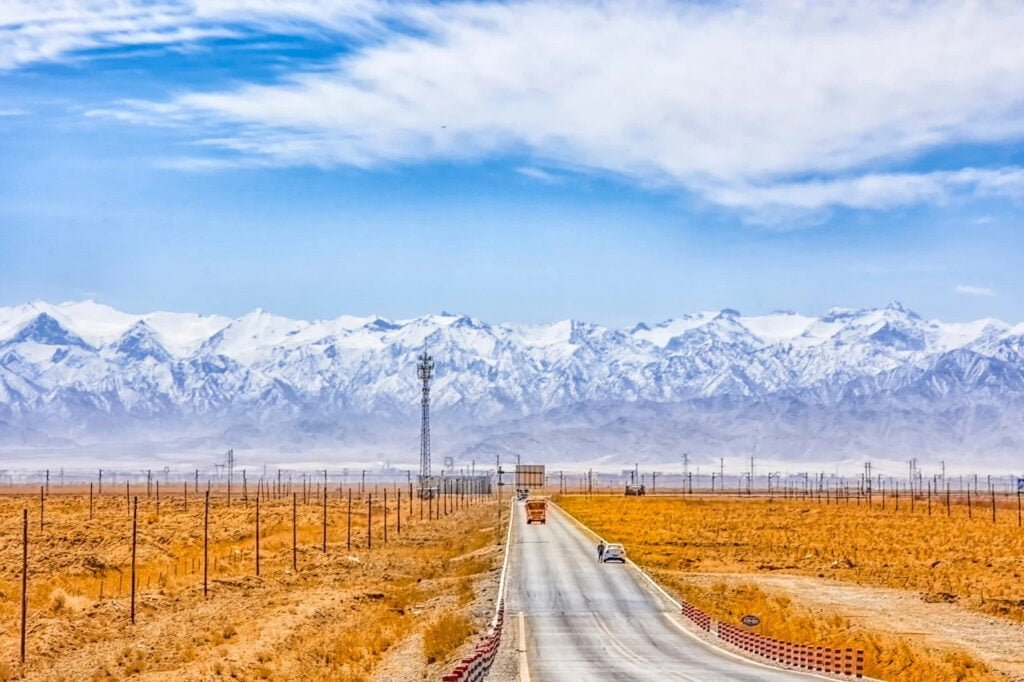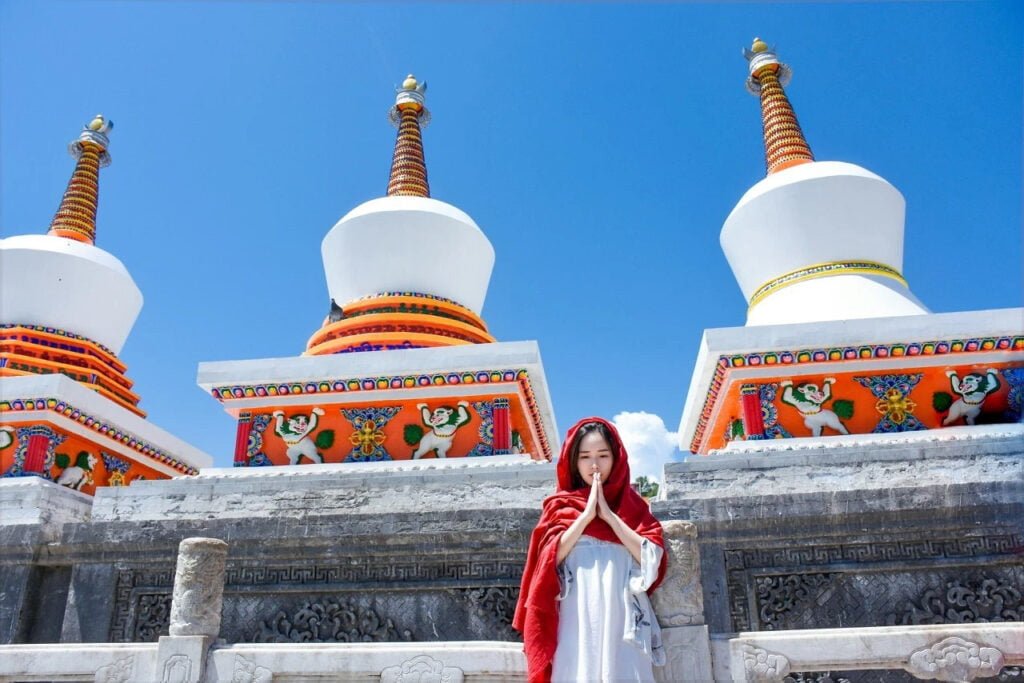If you’re an adventurer at heart, seeking China’s most breathtaking landscapes, look no further than Qinghai. Nestled on the Qinghai-Tibet Plateau, this region boasts a unique combination of nature’s wonders, including the most beautiful lakes, the most enchanting grasslands, the most stunning salt lakes, and the most vibrant sea of flowers.
Qinghai Lake, Qilian Grassland, Chaka Salt Lake, and Menyuan Flower Sea are just a few of the remarkable destinations that beckon travellers to set foot on this enchanting land. The sheer beauty and extreme natural landscapes of Qinghai are bound to leave you awestruck and coming back for more.
When planning a trip to Qinghai, you have several travel options at your disposal. The most common choices include chartered car tours, car rental for self-driving, or pure group tours. Let’s explore the pros and cons of each.
Chartered Car Tours: If you’re travelling with three or more people, a chartered car tour is highly recommended. It comes with the convenience of local drivers who double as knowledgeable guides. These tours often include route design services, making your journey hassle-free and enjoyable.
Self-Driving Tours: If you love to drive, renting a car might be an appealing option. However, some of Qinghai’s scenic spots are quite remote, which could increase travel fatigue. Getting lost is a real possibility, and safety concerns may arise, especially if you’re unfamiliar with the area. Plus, you may fall victim to scams while shopping or dining without local knowledge.
Pure Group Tours: These tours are ideal if you prefer travelling in a larger group, but they come with time constraints. You won’t have the flexibility to stop and explore as you wish, potentially impacting your overall experience.
Considering these factors, we recommend a chartered tour. It offers the best of both worlds: the freedom to choose your destinations and the assurance of a safe and guided journey. At Aike Chunwan, we’ve been specializing in Qinghai tourism for years, and we’re here to make your adventure unforgettable.

Qinghai boasts different landscapes throughout the year, but the best time to visit is June to September. During May and June, spring arrives late in the plateau areas, and the temperature remains cool. This period is particularly notable for the return of migratory birds to Qinghai Lake. The sight of hundreds of thousands of birds flocking to the lake is simply spectacular, making it a paradise for birdwatchers.
From July to September, midsummer in Qinghai ushers in sunny days and minimal rainfall. This period is ideal for travelers, as scenic spots reach their peak beauty. Menyuan rapeseed flowers bloom, the Qilian grassland becomes a lush emerald, and Qinghai Lake and Chaka Salt Lake glisten under clear blue skies.
If you prefer to avoid the crowds and high prices, consider visiting in September. However, we discourage winter travel to Qinghai due to extreme cold, heavy snow, road closures, and strong winds.
Qinghai offers four main tourist routes: the Qinghai Small Ring Road, the Qinghai-Gansu Great Ring Road, the Qinghai-Tibet Line, and the Sichuan-Qinghai-Exit Route. Each route showcases unique features and covers the main attractions of Qinghai.
Whichever route you choose, Qinghai promises an unforgettable adventure. So, embark on this journey and experience the marvels of this unique region for yourself.
The average altitude of the entire Qinghai-Tibet Line is over 4,500 meters, and you need to climb several mountain passes over 5,000 meters along the way. It is quite demanding on your body, so you must be prepared to prevent altitude sickness.
The Qinggan-Gansu Ring Road is a classic route for visiting the northwest If you are travelling by charter, the route can be customized and the most comfortable route will be designed based on the scenic spots you want to visit. Feel free to contact us for details.

Before embarking on your Qinghai adventure, it’s crucial to make the necessary preparations to ensure a smooth and enjoyable journey. Here’s a checklist of essential items and considerations:
Preparing for your trip is crucial to ensure you have a safe and enjoyable experience in Qinghai. Now that you’re well-equipped, get ready to explore the wonders of this magnificent region.
In a world full of natural wonders, there’s a place that often goes unnoticed, nestled between the enchanting regions of Tibet and Xinjiang. This hidden gem, often referred to as “the closest place to heaven,” is none other than Qinghai. With its awe-inspiring landscapes and diverse scenery, Qinghai is a paradise waiting to be discovered.
Qinghai Lake is like a gigantic mirror bestowed by nature upon the Qinghai Plateau. The months of July and August transform it into a breathtaking canvas. Thousands of acres of rapeseed flowers bloom, and the azure waters are adorned with bright yellow dots. Alpine pastures come alive with colourful wildflowers, and robust cattle and sheep graze freely.
Qarhan Salt Lake, the largest saltwater lake in China and a famous inland salt lake globally, is a natural marvel. The pristine salt crystals, transparent green waters, and the reflection of the surrounding landscape on clear days make it a photographer’s dream.
The Dulan Flower Sea, also known as the “Haisi Flower Sea,” is an alpine meadow adorned with a spectacular display of flowers. In July and August, the landscape is transformed into a sea of purple, white, and yellow blooms, creating a mesmerizing sight. It’s an immersive experience, with the fragrance of flowers in the air and larks singing in the background.
Dachaidan Emerald Lake lives up to its name, with crystal-clear waters that shimmer like emeralds under the sun. Despite being a paid attraction, it retains its pristine beauty. Its mirror-like surface reflects the sky, clouds, and distant peaks, creating an enchanting scene.
Known as the Black Sea, Queen Mother of the West Yaochi is a plateau lake sacred to Taoist believers. It’s surrounded by lush vegetation and home to a variety of wildlife, including wild yaks, donkeys, bears, and Tibetan antelopes.
Mang Ya Jadeite Lake, distinct from Dachaidan Jadeite Lake, boasts pristine emerald green waters that appear striking whether viewed from the ground or the air. Its isolation ensures a tranquil experience, allowing visitors to savour the serenity.
Aiken Springs, located in Moheerbrook Village, is a geothermal fountain famous for its continuous gurgling flow and vibrant colours. The high sulfur content keeps birds and animals away, leading to its unique name, the “Eye of the Devil.”
In the Qaidam Basin of Haixi, the Yadan Group formed over millions of years, is a unique geological wonder. This 60-square-kilometer area is reflected in Taijinair Lake like a mirage, with blue waters, unusual landforms, and vast sand dunes.
Stretching across Qinghai, Xinjiang, and Tibet, Hoh Xil Nature Reserve protects rare wildlife such as Tibetan antelopes, wild yaks, Tibetan wild donkeys, and Tibetan gazelles, as well as their natural habitats.

Embarking on a journey to Qinghai, you’ll witness the following highlights:
Qinghai is a land of wonder and beauty that you must experience in 2023. It’s a place that leaves an indelible mark on your heart, where you can connect with nature in its purest form. So, pack your bags and get ready to explore this hidden paradise.

It appears to be an exciting and diverse trip through Qinghai’s natural landscapes, historical sites, and cultural attractions. Be sure to follow the itinerary closely and enjoy your exploration of this beautiful region.
Check Out Qinghai Wiki Voyage